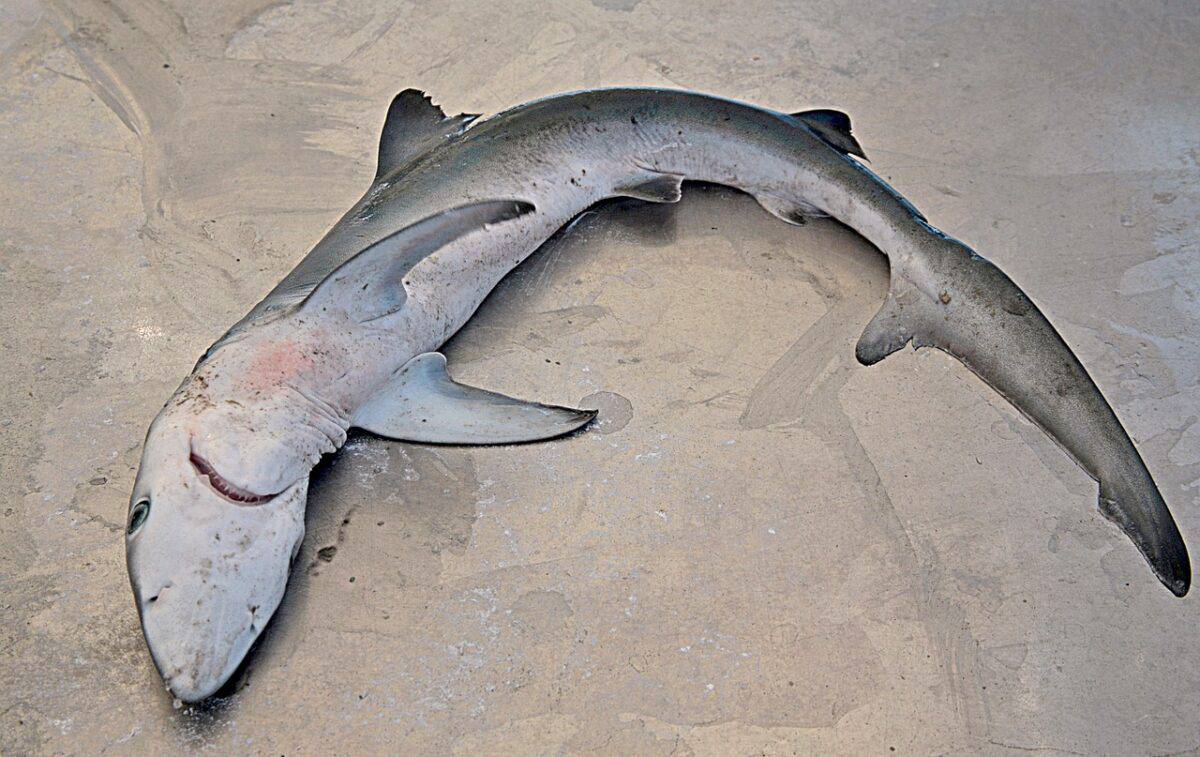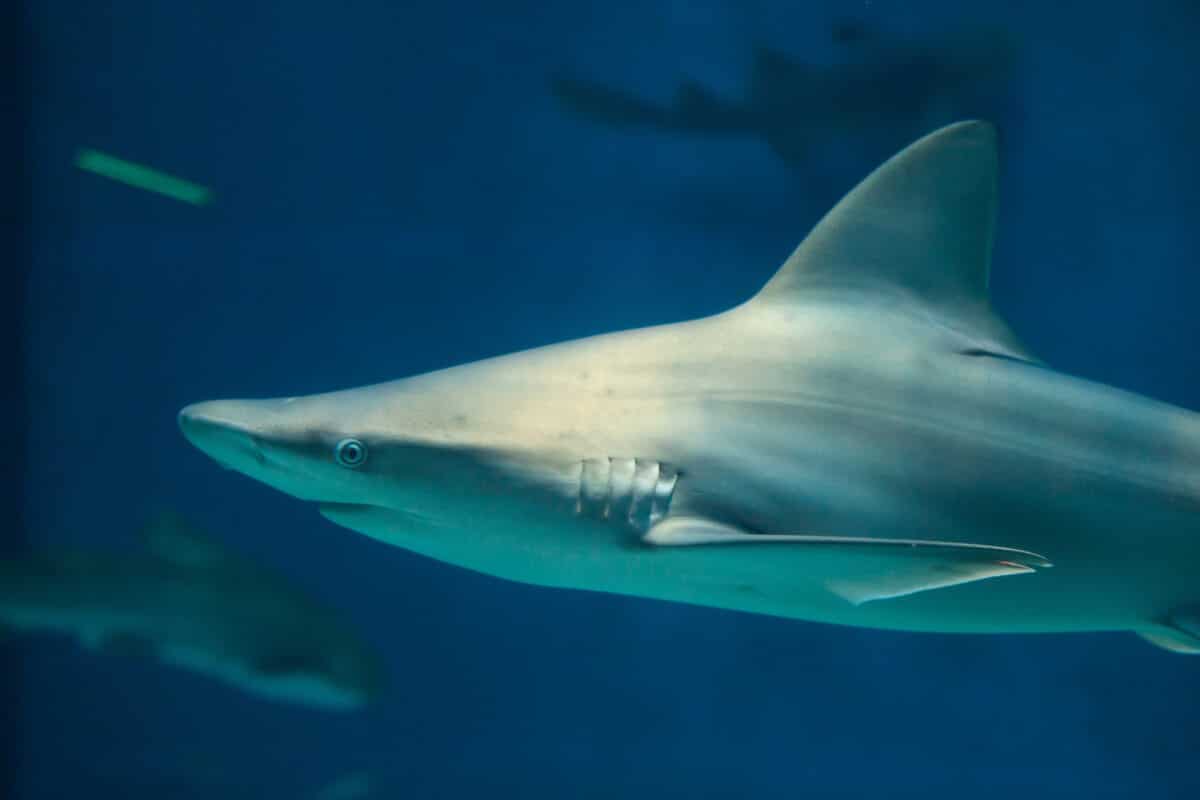When we think of sharks, our minds often conjure images of fearsome predators with rows of razor-sharp teeth, dominating the oceans and striking fear into swimmers worldwide. However, the reality differs significantly from this Hollywood-perpetuated stereotype. Contrary to popular belief, many shark species actually fear humans more than we fear them. These magnificent creatures have evolved over millions of years to become perfectly adapted to their marine environments, but human presence often triggers avoidance behaviors rather than aggression. This article explores 12 shark species that are known to be wary of or actively avoid human contact, highlighting the complex and often misunderstood relationship between humans and these ancient ocean dwellers.
12. Blacktip Reef Sharks

Blacktip reef sharks (Carcharhinus melanopterus) are among the most skittish sharks in our oceans. Despite their relatively small size—typically reaching only 5 to 6 feet in length—these sharks display remarkable wariness around humans. Found in shallow waters around coral reefs in the Indo-Pacific region, blacktips will quickly dart away at the first sign of human presence. Researchers have documented that these sharks can detect a human entering their territory from considerable distances and will immediately retreat to deeper waters. Their cautious nature stems from being frequently targeted by fisheries and experiencing habitat disturbance, conditioning them to associate human presence with danger. Ironically, while they fear us, blacktip reef sharks pose virtually no threat to humans, with only a handful of non-fatal bites recorded, usually in cases of mistaken identity or defense.
11. Bamboo Sharks

Bamboo sharks comprise several species within the family Hemiscylliidae, with the most common being the brownbanded bamboo shark (Chiloscyllium punctatum). These bottom-dwelling sharks rarely grow beyond 4 feet in length and are remarkably timid around humans. Marine biologists studying these sharks in their natural habitats observe that they actively avoid divers and snorkelers, often hiding among rocks or coral when they sense human activity. Their slender bodies allow them to squeeze into tight crevices to escape perceived threats. What makes bamboo sharks particularly interesting is their ability to “walk” along the ocean floor using their pectoral and pelvic fins, a technique they sometimes employ to retreat from human encounters. In captivity, bamboo sharks can become somewhat accustomed to human presence, but in the wild, they remain one of the most human-shy shark species.
10. Greenland Sharks

The Greenland shark (Somniosus microcephalus) is one of the most mysterious and elusive shark species, partly due to its extreme avoidance of human interaction. These Arctic dwellers, which can live for over 400 years, making them the longest-lived vertebrates on Earth, are rarely encountered by humans because they prefer the cold, deep waters of the North Atlantic and Arctic Oceans. When submersibles or deep-sea cameras have captured footage of these sharks, they typically exhibit avoidance behaviors upon detecting human technology. Their slow metabolism and movement (they swim at speeds of less than 3 mph) might suggest vulnerability, but their preference for depths between 600 and 7,200 feet keeps them well away from human activity. Scientists believe their caution may be evolutionary, as their extremely slow growth rate and late maturity (at around 150 years) means they cannot afford to take risks with unfamiliar entities like humans.
9. Thresher Sharks

Thresher sharks (family Alopiidae) are immediately recognizable by their extraordinarily long tail fins, which can be as long as their bodies. Despite being large sharks—common threshers (Alopias vulpinus) can reach lengths of 20 feet—they are incredibly shy around humans. Scuba divers report that threshers will quickly change direction and accelerate away when they notice human observers. These sharks have excellent vision and can spot divers from significant distances, giving them ample time to avoid interaction. Their skittish nature is so pronounced that marine researchers often struggle to study them in their natural environment. This avoidance behavior may stem from their hunting strategy; threshers use their tails to stun prey in open water and prefer not to be disturbed during this specialized feeding technique. Their fearfulness is well-founded, as they are heavily targeted by fisheries for their fins and meat, making human encounters potentially lethal from their perspective.
8. Whale Sharks

Despite being the largest fish in the ocean, reaching lengths of up to 40 feet, whale sharks (Rhincodon typus) are remarkably timid around humans. These gentle filter-feeders will often change their swimming direction or dive deeper when they detect human presence nearby. Researchers have observed that whale sharks are particularly sensitive to loud noises, rapid movements, and touching—all common behaviors of excited tourists during whale shark encounters. Studies in areas with high tourism activities show that whale sharks may permanently leave feeding grounds that become too crowded with human visitors. Their caution is likely an evolved response to their slow reproductive rate and long maturation period, making risk avoidance essential to their survival strategy. Conservation efforts now include strict guidelines for whale shark tourism, including maintaining minimum distances and prohibiting touching, to respect these giants’ natural wariness of human interaction.
7. Angel Sharks

Angel sharks (family Squatinidae) are masters of camouflage and avoidance. These flat-bodied, bottom-dwelling sharks bury themselves in sand or mud, lying in wait for prey to pass overhead. When it comes to humans, however, they employ this same camouflage strategy as a defense mechanism. Angel sharks are so afraid of human contact that they will remain perfectly still when approached by divers, hoping to go unnoticed rather than swimming away and potentially drawing attention. If discovered, they may briefly create a cloud of sediment as they rapidly burrow deeper or swim away with powerful thrusts of their tails. These sharks have excellent electroreception, allowing them to detect the electrical fields generated by human heart activity, giving them early warning of approaching divers. Once common in the Northeast Atlantic and Mediterranean, angel shark populations have declined by more than 80% in the past century due to bottom trawling fishing methods, giving them legitimate reasons to fear human presence.
6. Basking Sharks

The basking shark (Cetorhinus maximus) is the second-largest fish in the world, yet these giants—which can reach lengths of over 30 feet—are among the most cautious around humans. Despite their immense size, basking sharks are filter feeders with no interest in larger prey. They swim with their mouths wide open, filtering zooplankton from the water. When encountering humans, they typically alter their course or dive deep, sometimes disappearing for hours before returning to the surface. Marine biologists have documented rapid diving behavior when these sharks are approached by boats, suggesting a fear response triggered by engine noise or human presence. Their wariness makes perfect sense historically; basking sharks were heavily hunted for their liver oil, meat, and fins, leading to population collapses in many regions. Even today, their slow swimming pattern makes them vulnerable to vessel strikes and fishing gear entanglement, reinforcing their cautious approach to any human activity.
5. Leopard Sharks

Leopard sharks (Triakis semifasciata) are known for their distinctive dark spots and relatively small size, typically reaching about 5 feet in length. Common along the Pacific coast of North America, these sharks exhibit clear avoidance patterns when encountering humans in their shallow coastal habitats. When approached by swimmers or divers, leopard sharks will quickly change direction and swim away, sometimes in large groups. Their sensitivity to human presence is so acute that researchers studying them often use specialized underwater viewing techniques to observe natural behaviors without disruption. Interestingly, young leopard sharks seem to be more cautious than adults, suggesting this fear may be partially innate rather than learned. Their wariness reflects an evolutionary caution that has served them well; despite their abundance in some coastal areas, attacks on humans are virtually unknown. For leopard sharks, maintaining a safe distance from the unfamiliar silhouette of humans—potential predators from their perspective—represents a successful survival strategy.
4. Frilled Sharks

The frilled shark (Chlamydoselachus anguineus) is often described as a “living fossil” due to its primitive features that have remained largely unchanged for 80 million years. These deep-sea dwellers typically inhabit depths between 390 and 4,200 feet, rarely encountering humans in their natural habitat. On the rare occasions when frilled sharks have been observed by deep-sea submersibles or brought to the surface accidentally by fishing operations, they display extreme stress and avoidance behaviors. Their serpentine bodies, reaching up to 6.5 feet in length, allow them to quickly retreat into deep-sea crevices to avoid detection. Scientists believe their deep-water lifestyle evolved partly as a strategy to avoid larger predators, and this same instinct triggers when they sense human presence. Most of what we know about frilled sharks comes from dying or dead specimens precisely because these elusive creatures are so effective at avoiding human contact, making them one of the most human-shy shark species in existence.
3. Blue Sharks

Blue sharks (Prionace glauca) are among the most wide-ranging sharks found in temperate and tropical oceans worldwide. Despite their large size—reaching up to 12 feet—and sleek, predatory appearance, blue sharks typically demonstrate strong avoidance behaviors when encountering humans. Research vessels tracking these sharks have documented immediate diving responses when approached, with the sharks often descending hundreds of feet within minutes of detecting a boat overhead. While blue sharks are occasionally curious about unusual objects in their environment, direct human contact typically triggers a flight response. Marine biologists studying blue shark behavior note that they are particularly sensitive to electromagnetic fields, which may explain their ability to detect and avoid human technology underwater. Their caution around humans is well-justified; blue sharks are among the most heavily fished sharks globally, with tens of millions killed annually for their fins. Their fearful response to human presence represents an adaptive behavior that unfortunately isn’t sufficient to protect them from industrial fishing practices.
2. Goblin Sharks

The goblin shark (Mitsukurina owstoni) is perhaps the most alien-looking of all sharks, with a distinctively elongated snout and protrusible jaws that extend outward to capture prey. These deep-sea dwellers, typically found at depths between 890 and 3,150 feet, are rarely encountered by humans due to their preference for deep ocean habitats. The few specimens that have been brought to the surface alive have shown extreme stress responses and attempts to retreat from human handling. Their soft, flabby bodies and poor muscle tone suggest they’re not built for sustained swimming, especially in escape situations, which may explain why they’ve evolved to live in the largely human-free environment of the deep ocean. Scientists believe goblin sharks detect and avoid approaching submersibles using their highly developed electroreceptive ampullae of Lorenzini, which can sense the electrical fields generated by the equipment. Their extreme rarity in scientific collections, despite being distributed worldwide, testifies to their success in avoiding human contact through their deep-water lifestyle.
1. Megamouth Sharks

The megamouth shark (Megachasma pelagios) represents one of the most elusive large marine animals, with fewer than 100 confirmed sightings since its discovery in 1976. These filter-feeding giants, which can grow to 18 feet in length, spend most of their time in the deep ocean, rising to shallow waters only at night to feed on plankton. Their extreme rarity in human encounters is not merely a function of their deep-water habitat but also their active avoidance of human presence. When megamouth sharks have been tagged with tracking devices, researchers observe that they quickly descend to greater depths when surface vessels are present. Their entire lifestyle—from their deep-water daytime residency to their nighttime feeding strategy—seems optimized to avoid interaction with surface-dwelling creatures, including humans. The megamouth’s silvery-black coloration provides perfect camouflage in their preferred depth zone, further helping them remain undetected. Their extreme wariness has been so effective that for millions of years, these massive sharks remained completely unknown to science despite their large size and global distribution.
Understanding Shark Fear: A Conclusion

The notion that sharks fear humans more than we fear them represents an important paradigm shift in our understanding of these magnificent marine predators. Throughout this exploration of 12 shark species that exhibit cautious or avoidant behaviors around humans, a common theme emerges: sharks have legitimate reasons to fear our species. Decades of commercial fishing, habitat destruction, pollution, and targeted killing have decimated shark populations worldwide, with some species declining by more than 90% in recent decades. Their wariness around humans represents not irrational fear but an adaptive response to real threats. As we continue to learn about shark behavior and ecology, we gain a more nuanced appreciation of these animals as complex, cautious creatures rather than mindless killing machines. This understanding is crucial for conservation efforts, as it helps dismantle harmful stereotypes that have long hindered shark protection. By respecting the natural caution these animals display, we can work toward more harmonious interactions with sharks and ensure their continued survival in our increasingly human-dominated oceans.
- 10 Behaviors That Keep Eagles Healthy And 3 That Shorten Lifespan - August 24, 2025
- 13 Wildest Animal Migration Journeys - August 24, 2025
- 14 Creatures You Did not Know Will Surprise Even Experts - August 24, 2025

